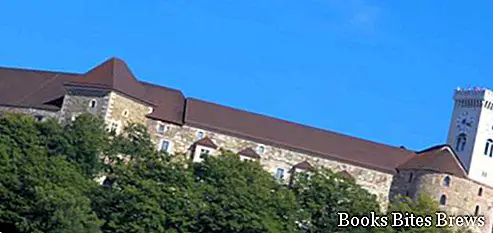What to see in Ljubljana, itinerary including the main monuments and places of interest, including St. Nicholas Cathedral, Predjama Castle and St. Peter's Church.
Tourist information
Ljubljana, the capital of Slovenia, is located in the central part of the country, along the Ljubljanica river which forms a bend in the city center, consisting of the Gruber drainage channel, dating back to 1780.
The area where the city is located was frequented very early as it was located along the natural passage of the routes geographically located from the Pannonian plain and the Alps, towards the Mediterranean on one side and towards Italy on the other.
The oldest findings date back to the Eneolithic and the Bronze Age, when the inhabitants lived on stilts on the edge of the marshes.
A necropolis from the early Iron Age was found inside the city and many traces of the culture of Hallstatt and La Tène and the Illyrians were found on the hill, which called this place Emona.
After the Roman conquest of the entire region in 48 BC, the city was called by Augusto Iulia Emona in 34 AD.
This became a center of the Roman road system and grew very important, until its decline which began first with the attacks of the Taurisci and then with the Huns who destroyed it in 451.
The first Slavic tribes arrived in the 6th or 7th century, found the city uninhabited and settled in the area between the river and the hill, which was fortified in the 8th century.
In the 9th century these tribes fell under the domination of the Frankish people and often suffered attacks by the Hungarians.
The city is mentioned for the first time with the Slavic name of Luwigana in a document dated 1144.
In 1284 from Ottokar II Duke of Bohemia the city passed to the counts of Gorizia and subsequently entered under the rule of the Habsburgs, until 1918, with a short interval during the Napoleonic wars.
Recommended readings- Portoroz (Slovenia): what to see between sea and spa
- Postojna (Slovenia): what to see in the caves
- Rogaska Slatina (Slovenia): what to see in the spa
- Ptuj (Slovenia): what to see
- Ljubljana (Slovenia): what to see in the capital
With the end of the Austro-Hungarian Empire, Ljubljana passed to the Kingdom of Yugoslavia and in 1941 the city and all of Lower Carniola became an Italian province in the Venezia Giulia region.
In 1945 following the defeat of the axis, Slovenian nationalist militias and German troops surrendered to the communist army of Tito and the city was integrated into the Federal Socialist Republic of Yugoslavia, until independence occurred in 1991.
Over the centuries, Ljubljana has been hit by earthquakes, in particular in 1511 and 1895. The damage suffered and subsequent reconstructions have influenced the architecture of the city which is presented today in various styles.
What see
The Baroque and Art Nouveau styles stand out in the historic center.
The Cathedral of San Nicola, in Baroque style, was designed by the Jesuit Andrea Pozzo, on the model of the Church of the Gesù in Rome.
On a hill south of the historic center, Predjama Castle is nestled in the rock where, from the octagonal tower, it is possible to admire the entire Alpine circle with the summit of Triglav in the north and the Sava plain in the east.
The Castle, already mentioned in 1144, was built on the remains of a Roman fort, which was in turn erected on an Iron Age settlement.
Other architecturally interesting works are the Church of San Pietro, the Franciscan Church of the Annunciation, the Triple Bridge and the Dragon Bridge.




